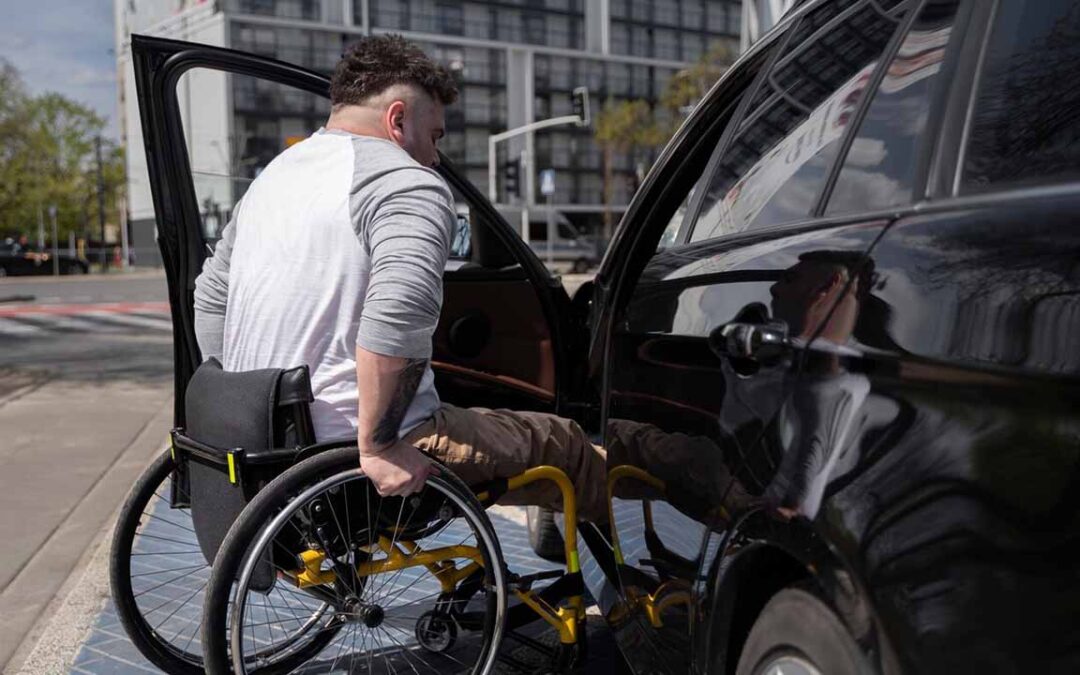As technology continues to reshape our daily lives, its impact on mobility solutions has been revolutionary. One area experiencing rapid innovation is the design and function of wheelchair accessible transportation (WAVs). These innovations are creating safer, more comfortable, and more inclusive transport options for individuals with mobility challenges.
In this blog, we explore how modern tech is improving WAVs and what the future holds for accessible transport in the UK and beyond.
1. Smarter Vehicle Conversions
Modern handicap accessible transportation is no longer limited to basic ramps or lifts. Manufacturers and conversion specialists are introducing intelligent systems that simplify usability for both passengers and carers.
Key innovations include:
- Automatic and remote-controlled ramps and lifts
- Sensor-activated side and rear doors
- Hydraulic lowering suspension systems for better alignment with kerbs
- Hands-free entry and exit with push-button or voice activation
These features make it easier for users and carers alike to operate the vehicle safely.
2. Electric and Hybrid Wheelchair Vans
With a focus on sustainability, many manufacturers are introducing wheelchair accessible transport with electric or hybrid engines:
- Lower carbon emissions contribute to cleaner air, especially in urban zones like London or Manchester
- Reduced noise levels, making rides more comfortable for sensitive passengers
- Lower fuel and maintenance costs, ideal for fleet operators
- Access to government incentives like the UK Plug-in Grant and reduced road tax
EV versions of popular WAVs (like the Nissan e-NV200 or Peugeot e-Traveller) are already being adapted by top conversion companies.
3. Enhanced Safety Systems
New WAVs include advanced safety features:
- Wheelchair restraint alert systems that notify drivers if tie-downs aren’t correctly secured
- Anti-slip flooring with drainage to prevent slips and spills
- Side and rear-view cameras, plus 360° sensors for tight urban manoeuvring
- Crash-tested interiors, including energy-absorbing flooring and custom head restraints
These innovations are vital for both personal WAV users and those relying on a handicap transport service near me.
4. Onboard Connectivity and Comfort
Technology is not just about safety and access — it also enhances comfort. Today’s WAVs offer amenities designed for long-distance or frequent travel.
Key features include:
- Wi-Fi hotspots for browsing or working on the go
- USB charging ports near wheelchair bays
- Entertainment screens, especially in WAV taxis serving schoolchildren
- Voice-activated climate control, ensuring temperature comfort without requiring physical reach
Such conveniences improve the passenger experience and make WAVs more enjoyable for all age groups.
5. GPS and Route Optimisation
Whether you’re using a private WAV or searching for a handicap taxi near me, navigation tech plays a huge role in efficiency and accessibility.
Here’s how:
- Real-time GPS tracking helps passengers or carers monitor arrival times
- Apps allow users to book rides and receive updates on driver location
- Route optimisation systems help avoid areas with:
- Route optimisation systems help avoid areas with:
- Steep kerbs
- Roadworks
- Areas lacking disabled parking or drop-off zones
- Steep kerbs
These tools help ensure punctual arrivals, especially for critical appointments like hospital visits or work shifts.
Also, read more about the Wheelchair Accessible Vehicles Mobility
6. Future Possibilities
Self-Driving WAVs
- Autonomous vehicles are being developed by companies like Waymo and Navya
- These may soon include self-driving WAVs, offering private transport without human drivers
AI-Driven Passenger Safety
- Cameras and AI will monitor passenger movements to ensure seatbelt compliance, detect distress signals, or optimise ramp usage
Full App Integration
- Booking, entry, temperature, and seat preferences could be handled entirely via smartphone apps, creating a seamless, rider-controlled experience
Voice-Controlled Accessibility
- Integration with Alexa, Siri, or Google Assistant for hands-free travel setup
7. Cost-Efficiency for Service Providers
Tech not only benefits passengers it also offers value to operators of handicap transportation services.
- Fleet management tools optimise vehicle usage and reduce idle time
- Predictive maintenance software lowers repair costs and prevents breakdowns
- Usage analytics help adjust service times and routes based on rider demand
These efficiencies make it easier for private businesses and public services to scale up their WAV offerings sustainably.
Final Thoughts
Technology is dramatically enhancing how wheelchair users experience transport. From smarter conversions to eco-friendly innovations, modern wheelchair accessible transportation services are transforming accessibility standards across the board.
Whether you’re a daily WAV user, a caregiver, or someone searching for a local handicap transport near me, today’s advancements mean better safety, smoother journeys, and more independence.
As we look to the future, one thing is clear: accessibility and innovation must go hand in hand
